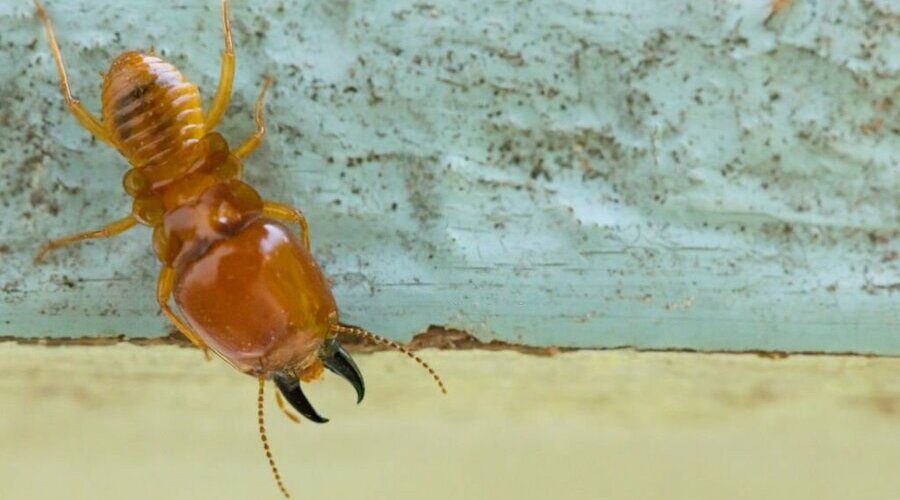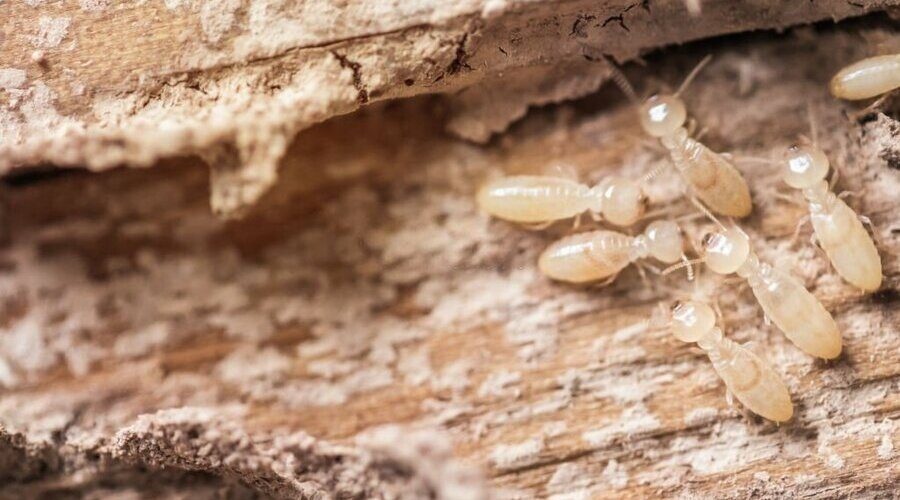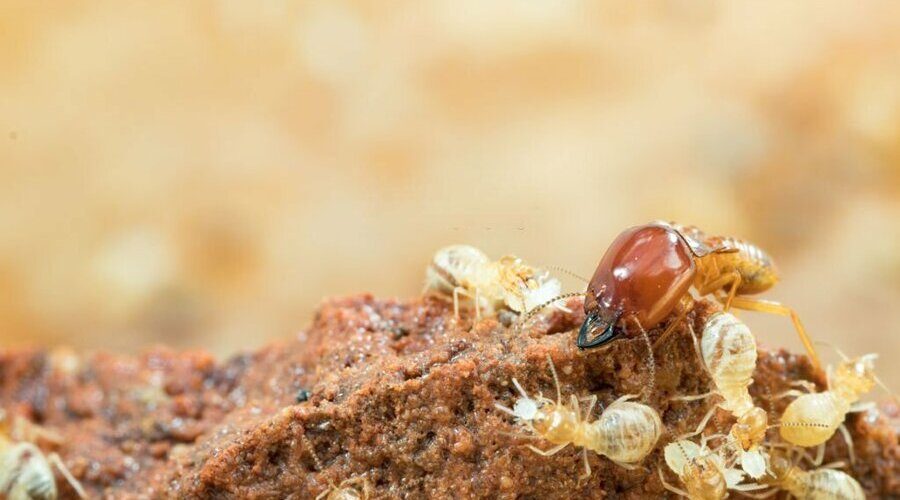Understanding the Behavior of Termites and Proactive Prevention Methods
Strategies for Effective Prevention and Swift Action
Termites can cause a severe yet often overlooked threat to homeowners.
These invasive insects can secretly feast on the structural wood of your home, progressively weakening integrity over time.
Extensive repairs, treatment, and massive headaches await those failing to take proactive precautions.
In this article, you’ll gain invaluable insights into early termite detection, and practical prevention measures.
Also, options for eliminating active infestations before devastating damage spreads.
Key Takeaways
- Termites are destructive pests that can cause major damage to homes. Understanding their behavior is key to prevention.
- Termites love moisture and cellulose materials like wood. Keeping moisture away from the home’s foundation is critical.
- Regular inspections, soil treatments, and bait systems can help prevent termite infestations.
- Signs of termites include mud tubes, hollowed wood, and winged insects swarming in spring.
- Effective termite control requires vigilance, early detection, and a customized plan for your situation.
The Threat Termites Pose
Termites are crawling insects that live in colonies and feed on cellulose material such as wood, cardboard, paper, and fiber. While the majority of the over 2,700 known termite species live harmlessly in nature, several types of termite pose a major threat to homes and structures.
These pests can chew through wood, flooring, furniture, drywall, insulation, books, and even electrical wiring. Left unchecked, they can progressively damage the structural integrity of a home. Termite damage often goes unnoticed in early stages since they remain hidden behind walls, floors, and foundations while tunneling and feeding.
Costly Damage
Termite damage can be extremely expensive to repair. According to the National Pest Management Association, termites cause over $5 billion in property damages every year in the United States. The costs include treatment, repairs, and even the reduced property value after a known infestation.
Catching termites early is key to limiting the costs. Proactive measures, vigilant monitoring, and immediate treatment when signs appear are critical for protecting your home.
Understanding Termite Behavior
To outsmart these pests, you need to understand their behavior patterns and biology:
nesting and Feeding Habits
- Termites live in colonies with defined roles – workers, soldiers, reproductive termites etc.
- Workers travel up to 100 feet in underground tunnels and mud tubes to reach food sources.
- They prefer to nest in moist areas with access to cellulose food sources. Ideal locations include wood piles, tree stumps, and areas close to water leaks or standing water near home foundations.
- Termites follow pheromone trails laid by scout termites, making them experts at locating vulnerable wood.
Need for Moisture
- Termites have soft bodies and need to maintain a high humidity environment to retain moisture.
- Their tunnels and mud tubes serve to keep moisture levels steady as they travel to and from the nest.
- If the nest or their travel ways dry out, termites lose essential body moisture and die.
Swarming
- In spring and early summer, mature colonies send out swarms of winged termites.
- These reproductive termites mate, lose their wings, pair up, and scout for locations to begin a new nest.
- Seeing these winged termites emerge inside your home indicates an active infestation requiring immediate inspection and treatment.
By leveraging knowledge of termite dependence on moisture and wood, you can take key steps to protect your home. Let’s look at the top prevention and monitoring basics:
Preventive Measures
Stopping termite infestations starts with:
Moisture Management
Termites need damp conditions to thrive. Some important moisture control tips:
- Ensure proper drainage and slope of soil around foundations so water flows away from your home’s perimeter.
- Maintain roof gutters and downspouts to channel rainfall runoff away from the structure.
- Address plumbing leaks, outdoor faucet drips, condensation issues, or standing water against the foundation. These serve as welcome invitations for termites!
- Ensure air conditioning units, water heaters, laundry appliances, and bathrooms have proper drainage and are not leaking water indoors.
- Ventilate damp basements and crawl spaces to allow proper air circulation.
- Consider moisture barriers and gravel layers around foundations to reduce moisture penetration.
Landscaping Precautions
Smart landscaping deters termites:
- Avoid wood mulch or thick vegetation touching the home’s foundation. These provide handy access for termites.
- Ensure there is a 1 – 2 foot vegetation-free border of gravel or stones separating landscaping from foundation walls.
- Remove old tree roots, stumps, wood debris, and construction lumber from contact with buildings. These are tempting food sources and harborage for termites.
Construction & Renovation Precautions
Termite-resistant building materials and precautions include:
- Concrete foundations rather than wood foundations or supports.
- Pressure-treated landscape timbers around foundations.
- Foam board insulation on exterior foundation walls.
- Termite-resistant framing lumber indoors.
- Careful sealing of entry points for utilities, pipes, and wires.
During renovations or repairs, examine wood structures for possible infestation before rebuilding. Replacing damaged structural members denies termites their entry path into homes.
Detection & Monitoring
Regular monitoring and inspections allow early detection of termite activity before major damage occurs:
Watch for Signs
- Mud tunnels leading from the ground up onto foundations or piercing through concrete slabs. These offer termites moisture-protected highways.
- Swarming winged termites, especially swarmers emerging indoors. This signals an active infestation.
- Hollowed or tunneled wood, or wood that probes easily with a knife or screwdriver.
- Discarded termite wings caught in spider webs or stuck within warning tunnels.
- Damaged sheetrock, baseboard, wood trim, flooring, shelving or roof shingles. Look closely for areas that seem packed with mud which may hide termite activity.
Inspect Susceptible Areas
Annually inspect the home’s exterior and vulnerable interior locations for any signs of termites. Key areas to check closely include:
- Foundation walls, especially near bath traps, kitchens, and laundry rooms where leaks occur.
- Basement structural wood, supports, floor joists and subfloors. A moisture meter helps detect areas of higher dampness.
- Hollow block foundations and spaces around utility lines, wiring and plumbing. Termites exploit these hidden highways.
- Attics for mud tunnels extending from roof framing down interior walls.
- Porches, decks and structural framing abutting the home.
Enlist a professional pest control company for thorough periodic inspections. Dogs and electronic equipment can detect termites behind walls long before damage emerges.
Treatment and Control Plans
If signs of termites appear, well-planned control measures can eliminate them and prevent chronic damage. Typical termite treatment options include:
Soil Treatment
- Creating a chemical barrier in the soil around foundations using Termidor, Premise, or other termiticides. This serves as a perimeter defense, killing foraging termites. It is effective long-term prevention for new colonies.
Bait Systems
- Installing termite bait stations around the structure for spot treatment of certain areas.
- Bait combines cellulose food plus a slow-acting insecticide. Foraging termites consume and share the bait, slowly destroying the colony.
Wood Treatment
- Treating exposed structural wood with borate-based chemicals that termites dislike. Often used for framing protection.
- Can provide a safety net if termites penetrate chemical soil barriers.
Heat Treatment
- Heating wood with termite infestation via special equipment to ~120°F terminates termites that go deep in the framework without chemicals.
- Used alone or in conjunction with termiticides for elimination of existing termite colonies.
The optimal treatment approach depends on factors like the home design, construction solutions, and surrounding buildings. A customised plan focused on both eliminating current termites and preventing future ones works best.
Combining vigilant DIY monitoring with professional treatments before major damage arises gives homeowners the best odds in this pest battle. Avoid complacency and stay alert!
Frequently Asked Questions
What type of termite causes the most structural damage to homes?
Subterranean termites are responsible for the extensive damage. As social insects, an entire colony with thousands of worker termites can substantially compromise structural integrity.
What are some key signs of termite activity within a home?
Early signs include mud tubes on foundation walls, hollow damaged wood, swarming winged reproductive termites indoors, discarded wings, and wood packed with mud that may indicate hidden tunnels.
What is an important proactive preventative measure against future termite infestations?
Having the soil treated around the home’s foundation with a protective liquid termiticide applied by a professional pest control service provides effective protection against future attacks by creating a chemical barrier lethal to foraging worker termites.
Why is it advisable to have direct contact between wood structures and foundation concrete?
Avoiding direct contact eliminates a handy travel pathway exploited by subterranean termites to gain concealed access to the home’s wood framing and floors once penetrating the foundation level. This helps limit termite access within walls and reduces damage.
Conclusion
Defending against destructive termite damage requires careful and a proactive methods.
Combining prevention measures with vigilant self-inspections and customised control plans helps homeowners against these pests.
Don’t give termites the chance to consume your valuable investments from the inside.
Stay alert and contact our friendly pest control technicians for help when signs appear.
Protect what matters from termite invasion through thoughtful preparation and early action.



